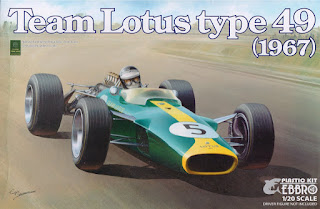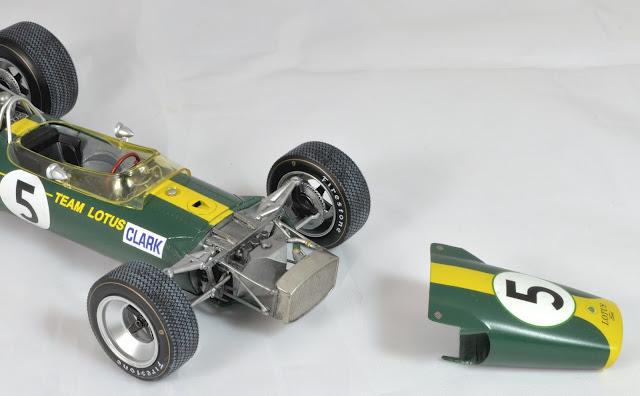After what seems a lifetime of building cold war aircraft and warships, it's a pleasant change to get back to my roots, with a good old WWII fighter. This kit is not a new mould, but is a good one, and in true Hasegawa style represents their usual policy of milking every mould they have for everything they can get. This boxing is designed to reproduce the A-5 flown by Walter Nowotny in Russia in 1943 and contains a few additional parts to represent this. But check your references carefully, Oblt. Nowotny flew many different aircraft and versions of the same aircraft, and not all sources agree on some of the specifics.
The build was to be "White 4", and my primary reference for this build was a combination of the excellent build by Chris Wauchop, the EagleCals #83 decal sheet and the Kagero "Green Heart Fighters" booklet. Into the mix came a host of aftermarket extras, including (but not limited to) the True Details cockpit set, Eagle Parts wheels, Master brass gun barrels and pitot, HD VDM Spinners and Eduard photo etch.
I'm not a huge fan of True Details parts as a rule, and avoid their resin wheels like the plague. Their attempt to represent tyre bulge usually results in an apparent flat tyre. However this cockpit set is a real gem. Accurate (as far as I can tell) and crisply moulded, and with careful painting comes up a real treat. A little messing around was needed to get it to fit (I'm not sure that it was this kit that the set was designed for, the kit part callouts are just wrong) but with a little patience all went in well.
The Eagle Parts tail wheel also has to be installed before the fuselage is closed up. Again, it does not fit this kit perfectly, and requires a little trimming and padding. But what I can state with confidence is that the Hasegawa plastic did not fail to impress. The fit of the parts is worthy of that other Japanese kit manufacturer who shall not be named when discussing Hasegawa, and everything lined up and fitted perfectly even when I thought it wouldn't due to my own messing around.
 Much of the Eduard etch was not needed as it is for the cockpit which is more than adequately catered for by True Details, although I did borrow the Eduard rudder pedals. However Eduard etch was used for the undercarriage and wing flaps. Speaking of the latter, I always regret agreeing to install etched wing flaps, seems like a good idea at first but they are never straightforward. This is no exception. Much Dremel work was required thinning out the wing parts and adjusting the contours. But they knock the kit flaps into next week, and look really good, if I say so myself.
Much of the Eduard etch was not needed as it is for the cockpit which is more than adequately catered for by True Details, although I did borrow the Eduard rudder pedals. However Eduard etch was used for the undercarriage and wing flaps. Speaking of the latter, I always regret agreeing to install etched wing flaps, seems like a good idea at first but they are never straightforward. This is no exception. Much Dremel work was required thinning out the wing parts and adjusting the contours. But they knock the kit flaps into next week, and look really good, if I say so myself. A fair bit of time was spent getting the engine right, although I forced myself to stop before I went too crazy because of course this is a closed cowling build and very little is actually visible.
A fair bit of time was spent getting the engine right, although I forced myself to stop before I went too crazy because of course this is a closed cowling build and very little is actually visible. Painting was done with my usual Tamiya acrylics, my own mixes in all cases (there are no direct matches for the RLM colours) and since the customer had asked for a reasonably weathered machine I spent a bit of time adding paint variations and fading at an early stage. The EagleCal #83 decals were used and went on beautifully, and after another gloss coat I applied a black oil paint wash, followed by some careful post shading and some additional oil paint weathering.
Painting was done with my usual Tamiya acrylics, my own mixes in all cases (there are no direct matches for the RLM colours) and since the customer had asked for a reasonably weathered machine I spent a bit of time adding paint variations and fading at an early stage. The EagleCal #83 decals were used and went on beautifully, and after another gloss coat I applied a black oil paint wash, followed by some careful post shading and some additional oil paint weathering.I was very pleased with the end result, not least because it has been so long since I have had an opportunity to build one of these iconic machines. I very much hope you enjoy the photos!







































